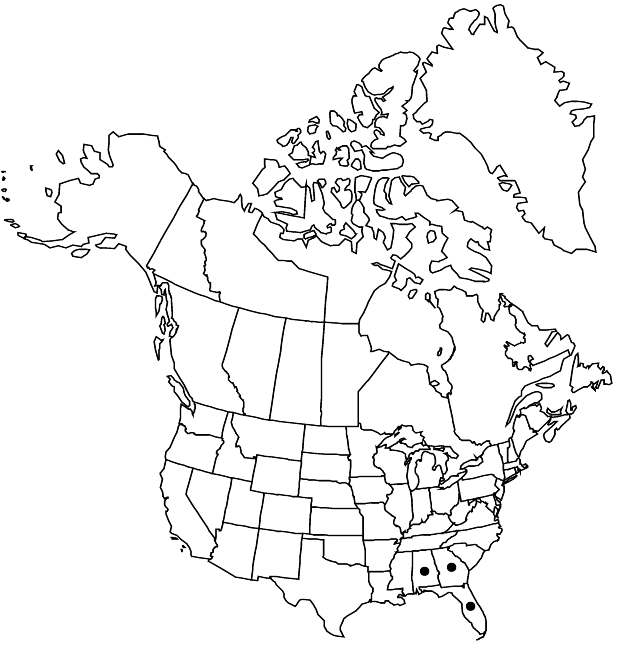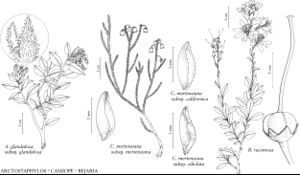Bejaria racemosa
Descr. Pl. Nouv., plate 51. 1801 ,.
Shrubs to 3 m. Leaves: petiole 1.2–1.4 mm, glabrous (hispid or tomentose); blade usually elliptic or obovate, sometimes ovate to lanceolate, 1.8–5.2 × 0.6–2.5 cm, base cuneate (rounded), apex acute to rounded, surfaces glabrous or reddish-tomentose when young. Inflorescences appearing stalked because of reduction in leaf size proximal to raceme. Flowers: sepals (unequal in size, outer ones largest), 3.2–5.2 × 3–9 mm, lobes ovate to depressed-ovate, 1.5–2.9 × 1.5–2.9 mm; petals spreading to reflexed, white, pink, or white with pink lines, spatulate, 18–33 × 3.5–8 mm; filaments tomentose; ovary glabrous. Capsules [5–]7-locular, 4–6.6 × 6.3–11 mm. Seeds 1.1–1.8 mm.
Phenology: Flowering spring.
Habitat: Low pine flatwoods and scrub oak-saw palmetto
Elevation: 0-100 m
Distribution

Ala., Fla., Ga.
Discussion
The outside of the petals of Bejaria racemosa is covered by an extremely sticky exudate that often captures insects. T. Eisner and D. J. Aneshansley (1983) showed that it is as potently adhesive as a commercial glue marketed specifically for trapping insects. Some herbarium labels report that the plants are sometimes used as fly paper. The large white or pink flowers have horticultural value and the species has entered the nursery trade.
Selected References
None.
